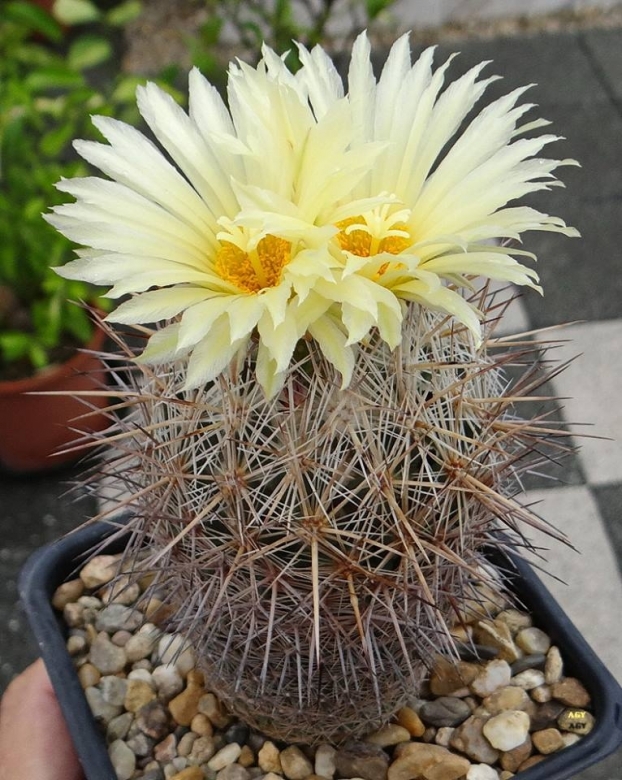
Coryphantha werdermannii Photo by: Agócs György
Origin and Habitat: Coahuila, San Luis Potosí, Puebla, Mexico.
Altitude range: 750-1000 metres above sea level.
Habitat and ecology: Coryphantha werdermanniiSN|10432]]SN|10432]] grows in low limestsone hills of the Sierra de la Paila, together with Echinocereus conglomeratusSN|7820]]SN|7820]], Epithelantha micromerisSN|6936]]SN|6936]], and Neobuxbaumia macrocephalaSN|6381]]SN|6381]]. The natural population is abundant and healthy. This species is of limited interest to collectors; illegal trade is not now reported.
Synonyms:
See all synonyms of Coryphantha werdermannii
back
Accepted name in llifle Database:Coryphantha werdermannii Boed.Monatsschr. Deutsch. Kakteen-Ges. 1: 155. 1929Synonymy: 3
back
Common Names include:
ENGLISH: Jibali Pincushion Cactus
SPANISH (Español): Biznaga partida amacollada
Description: Coryphantha werdermanniiSN|10432]]SN|10432]] is a dwarf cactus with juvenile globose body which became ovoidal as it age. The outstanding feature of this species is an abrupt and contrasting change from the juvenile aspect with dense, flattened, white spines and a smooth appearance to the adult with additional, dark, protruding spines and a ‘fierce’ appearance.
Derivation of specific name: This member of the Cactaceae family was given this name by Prof. Dr. Erich Werdermann (1892–1959), German botanist in Berlin, specialist on cacti and former director of the Botanischer Garten und Museum Berlin.
Stem: Usually single, flattened at first, then more egg-shaped, 7-9 (-30) cm tall, and about 6-7(-8) cm in width. Epidermis pale grey-green. Woolly at the apex. Old plants tend to be column-shaped with occasionally offsets growing from the sides.
Roots: Very fine fibrous that extend just a few millimetres below the ground surface, probably they also serve the absorption of dew in this region poor of precipitations.
Tubercles: Conical to cylindrical, ascending, firm, to 15 mm long, axils naked.
Areoles: Elliptical with white wool.
Central spines: 2-4 (only in mature specimens), rigid, stiffly pointed, strongly projecting, one of them strongly curved, sometimes straight, whitish, clear brown, tan or black, 13-24 mm long.
Radial spines: (15-)21-25(-30) (depending on plant’s age), whitish, greyish-white to tan 6-19 mm long, more or less pectinate, thin.
Flowers: Quite large, often glossy pale yellow at first becoming pink with a red throat, to 5 cm long, 5-7 cm in diameter on mature specimen.
Fruits: Green, to 10 mm long.
Bibliography: Major references and further lectures
1) Edward Anderson “The Cactus family” Timber Press, Incorporated, 2001
2) James Cullen, Sabina G. Knees, H. Suzanne Cubey "The European Garden Flora Flowering Plants: A Manual for the Identification of Plants Cultivated in Europe, Both Out-of-Doors and Under Glass" Cambridge University Press, 11/Aug/2011
3) David R Hunt; Nigel P Taylor; Graham Charles; International Cactaceae Systematics Group. "The New Cactus Lexicon" dh books, 2006
4) John A. Burton, Sabina G. Knees, Mike Read, Royal Botanic Gardens, Kew, Great Britain. Dept. of the Environment “CITES guide to plants in trade” Dept. of the Environment, 1994
5) Urs Eggli, Leonard E. Newton “Etymological Dictionary of Succulent Plant Names
6) Copertina anteriore” Springer Science & Business Media, 29 June 2013
7) “CITES and Cacti – An introduction to cacti covered by the Convention on International Trade in Endangered Species”. Retrieved 21 March 2016 from: <http://www.kew.org/sites/default/files/CITESCactiPack.pdf.pdf>
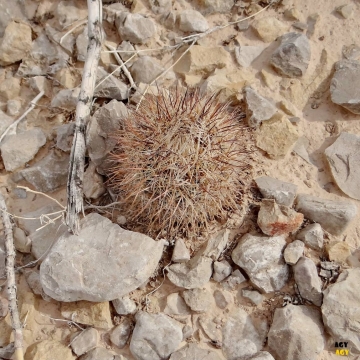 In habitat Mexico. Photo by: Agócs György
In habitat Mexico. Photo by: Agócs György Young specimen. Photo by: Valentino Vallicelli
Young specimen. Photo by: Valentino Vallicelli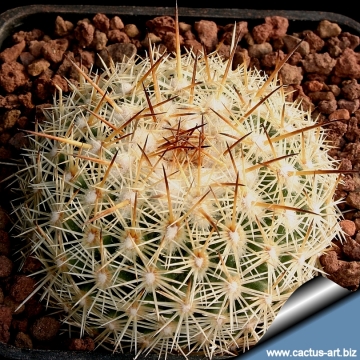 Sub-adult specimen. Photo by: Cactus Art
Sub-adult specimen. Photo by: Cactus Art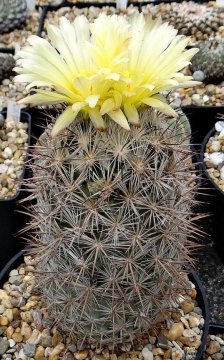 Adult specimen. Photo by: Agócs György
Adult specimen. Photo by: Agócs György - PP200 Hundido, Coah. Mx.
After a youth-stage of 7 to 12 years, with purely smooth radial spination suddenly strong central spines appear on the top, which finally cover the whole body and which are responsible for the wild look. Photo by: Valentino Vallicelli
- PP200 Hundido, Coah. Mx.
After a youth-stage of 7 to 12 years, with purely smooth radial spination suddenly strong central spines appear on the top, which finally cover the whole body and which are responsible for the wild look. Photo by: Valentino Vallicelli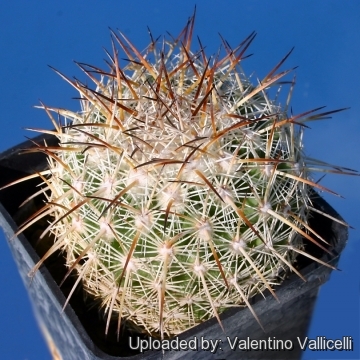 Coryphantha werdermannii Photo by: Valentino Vallicelli
Coryphantha werdermannii Photo by: Valentino Vallicelli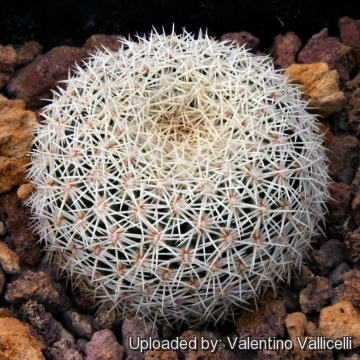 Coryphantha werdermannii Photo by: Valentino Vallicelli
Coryphantha werdermannii Photo by: Valentino Vallicelli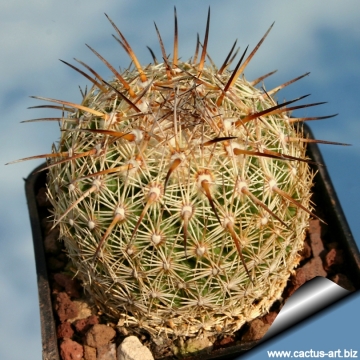 Coryphantha werdermannii Photo by: Cactus Art
Coryphantha werdermannii Photo by: Cactus ArtCultivation and Propagation: Somewhat sensitive to overwatering (rot prone) and very slow-growing. Because of it’s small size makes a great potted plant specimen, usually reserved to experienced collectors,
Grow in a mineral cactus compost, requires good drainage. Water in moderation, keep drier in winter. Full sun to partial shade but is tolerant and prefers light shade during the hot Summer months.. Provide very good ventilation.
Frost Tolerance: Hardy to - 5°C if kept dry.
Propagation: Seeds as usually shoots are not available.
Your Photos
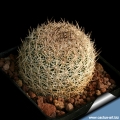
by Cactus Art



















